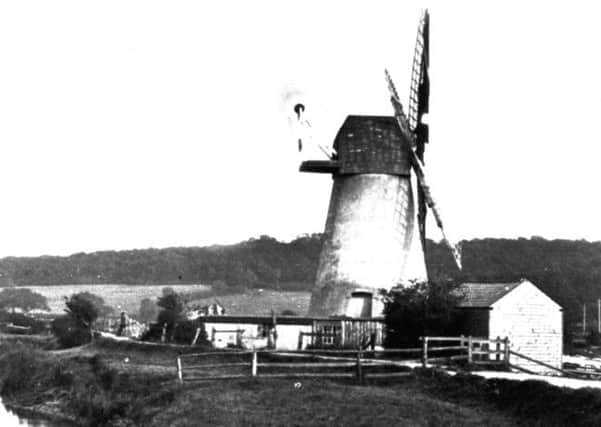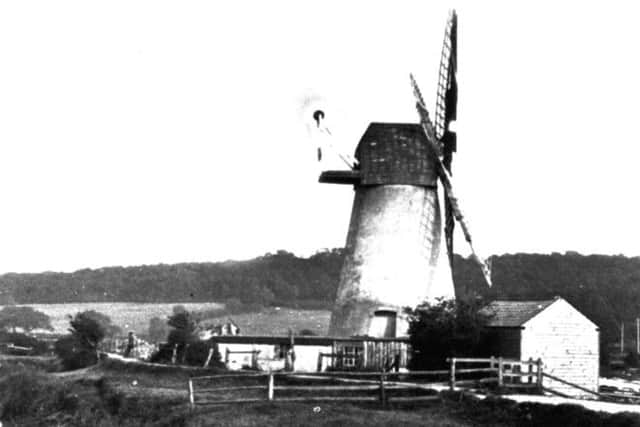Arundel memories of the Rev William Bartlett – Part one


Although he was baptised a Bartlett, it appears that later in life William chose to add ‘Hunter’, which was his grandmother’s name, to his surname.
His father, Edward Bartlett, was organist at St Nicholas Church, Arundel, for 53 years, from 1875 almost until his death in 1929.
Advertisement
Hide AdAdvertisement
Hide AdAll the ‘quotes’ in this article refer back to the transcript in which are described a number of key moments in the history of the town.


Although the memories were written much later in life, William has a great gift of being able to conjure up vivid images of Arundel during the Victorian era.
Although he was a Rev later in life, his name does not appear on the list of vicars in the local parish church of St Nicholas; this latter part of his life will require more research.
During the decade he was born and over the following years, one of the principle events in the town was the huge rebuilding and restoration project of the castle (1890-1903), by Duke Henry, the 15th Duke of Norfolk.
Advertisement
Hide AdAdvertisement
Hide Ad“The work was carried out by Messrs Ratte and Kett of Cambridge and it occupied a good many years.
“It was a daily sight to see those huge blocks of stone being hauled up from the station on low trucks drawn by those magnificent horses hitched in a long single line.
“I used to watch the masons sitting in little sentry boxes sawing up the blocks with water trickling down the saw crack.
“One of the haulage contractors was a man named R. Stone from Arundel.
Advertisement
Hide AdAdvertisement
Hide Ad“He had a team of magnificent horses and knew my fondness for them.
“To my great delight, on a number of occasions he gave me permission to ride astride the broad fat backs of these fine horses.
“I can recall going at a slow jog trot down to the station and leading another horse beside me.
“It took four, sometimes five, of these horses to haul a low truck with a great block of stone up the steep hill to the castle.
Advertisement
Hide AdAdvertisement
Hide Ad“These horses were always large, fat and very powerful, the finest animals I have ever seen.”
The closure of the centuries-old Mill Lane and the building of the new Mill Road was originally proposed by Henry Granville, the 14th Duke of Norfolk, prior to 1850, because drunken conversation including ‘foul and offensive language’ could be heard from the lane within the castle.
However, due to local objections, it would not be until 1894 that Mill Lane would be closed off and replaced by the new Mill Road.
Aged eight, William recalls the opening of this new road.
“The new Mill Road, with its newly-planted avenue of trees, was opened on the wedding day of the Duke of York and Princess Mary of Teck.
“Later, they became King George V and Queen Mary.
Advertisement
Hide AdAdvertisement
Hide Ad“The old Mill Lane to Swanbourne Lake and the Black Rabbit led from Lassetter’s Corner, around and under the front of the castle rampart, past the castle dairy, over the Mill Stream, around to where the new road joined it by the new Mill Stream bridge.
“I happened to be the first Arundel boy to cross over the new Mill Stream Bridge before the stone was ever laid over the wooden structure.”
William notes that some of the old Maison Dieu ruins – we now know these remains were misidentified at the time and are, in fact, the Blackfriars Friary – were removed to make way for the building of the new road.
He also goes on to say the road was completed before the new entrance to the castle or the post office were built.
Advertisement
Hide AdAdvertisement
Hide AdBefore the new post office was built in Mill Road (c1895), “the site was occupied by some old houses and an old butchers shop, and the post office stood in the High Street next to the Gazette offices.
“The postmaster was Fred Lockyer, who was a conjurer and a very amusing character.”
William describes the hustle and bustle of Arundel as a port town and remembers Bartlett’s corn store and the ships carrying animal fodder and seed that was unloaded there.
Years later, in 1930, this building, then a deckchair factory, burned to the ground and had to be demolished.
Advertisement
Hide AdAdvertisement
Hide Ad“I remember the large ships towed up river from Littlehampton at high tide by the famous tug Jumna.
“I had many rides on the Jumna in those days, often going way out to sea to pick up coal brigs and timber vessels off the coast.
“The Jumna perished years later in the war while being used as a mine sweeper.
“I used to watch with excitement as a boy to see them turn those huge brigs round in the river to be towed back to Littlehampton.
Advertisement
Hide AdAdvertisement
Hide Ad“While going down river on the tug, I used to watch the men on the schooners getting the sails and tackle ready for sailing as soon as they got out to sea when the tug cast off her towrope.
“In those days, the railway bridge at Ford was opened by hand winches which dragged the bridge sections back over the rails.
“The ships brought timber to the yards of Messrs GH Bulbeck and Co along River Road.
“They had a huge steam sawmill and a crane lifted the timber from the ship to the timber carrier which operated with the mill.
Advertisement
Hide AdAdvertisement
Hide Ad“The path from River Road crossed the timber yard as it does across the same site today.
“Alas, the big sawmill has gone. Two big breweries and a mineral water factory have likewise disappeared from Arundel.
“The town now has no head postmaster and no static master in residence.
“A windmill, formally used for corn and later for cement, once stood on the left bank of the river opposite the Causeway – the landscape has suffered from its loss.
Advertisement
Hide AdAdvertisement
Hide Ad“Brigs which once brought coal to the wharf at the old gas works and the men who could be seen wheeling the coal from the vessels along a big plank to the gas works all gone.”
To be continued...
• For forthcoming events and more information on the museum, visit www.arundelmuseum.org.uk or call 01903 885866.